Since I’m the biggest square in town, I thought it would be appropriate to do a page, or set of pages, on the five major squares in Manhattan south of Central Park: Madison, Union, Stuyvesant, Tompkins, and Washington. (Yes I know I have left out Bryant Park and Greeley and Herald Squares, which I’ll get to in an upcoming date). It was in April 2011 during one of my periods of unemployment, so I did it during the work week, when the streets were at their busiest and I was able to blend in fairly easily and the sight of a shambling, shuffling tourist with a camera was not tremendously unusual; it was also one of New York’s very occasional sunny April days with pleasant temperatures.
My aim was not to emphasize the parks themselves — I’ve done pages on statuary in Madison and Union, as well as a page on Tompkins Square, and may revisit them soon enough — NYC is constantly changing and I have been dazedly wandering its streets for over 50 years, but with a camera for less than 15, so there is constant catchup to do.
My emphasis here is not only the squares, but their interstitial streets–I chose a random route between them, but, perhaps, after the whole walk is done, a common thread can be found between all five. Or maybe not. I set out from Penn Station towards Madison … along West 31st Street
St. Francis of Assisi Church
ST. FRANCIS OF ASSISI Parish was founded in 1844 by Hungarian immigrant Father Zachary Kunz. This, the second church building, was dedicated in 1892.
The city’s extraordinary growth at the turn of the century stimulated great social and economic change. It quickened the pace of urban development and altered the face of many neighborhoods. Nowhere was this impact felt more keenly than on West 31st Street. Many families moved away when their stable, working class community was transformed – almost overnight – into the heart of New York City’s notorious “Tenderloin District.”
To keep up with the changes around them, the Franciscan Friars, long used to coping with the challenges of bringing God to the people in diverse ways, inaugurated what was to become a way of life for “parish without parishioners.” Thus was born the concept of an urban “service church” suited to the needs of a transient population of commuters, shoppers, tourists, laborers and business persons.
The first of these innovations was the introduction of a Mass known as the Nightworker’s Mass, which was celebrated for employees working on the night shift as well as actors, newspapermen and travelers out of Penn Station who had either arrived in the city late at night, or had a long wait between connecting trains.
Soon afterwards, St. Francis Church responded to the spiritual needs of daytime employees and became the first church in America to receive permission to celebrate a daily Mass as late as 12:15 in the afternoon. Father Anselm Kennedy, the pastor who introduced the Noonday Mass, also began the practice of hearing confessions daily throughout the entire day. In response to the disaster of the Great Depression, the daily Breadline started in 1929 and has continued to serve the hungry of our city every day since. St. Francis of Assisi
In the 1970s, my parents would occasionally go on bus tours called “Franciscan Pilgrimages” (that are still in operation) that left from the church. I went to Montreal, Quebec, and Trois Rivieres, Canada, with them in 1972, the only time I have ever been in Quebec.
Father Mychal Judge, the first responder killed at the 9/11/01 terrorist attacks, was based at St. Francis at the time of his death.
O’REILLY’S PUB, West 31st between Broadway and 6th Avenue. Though I have been aware of this place since I began working in the area in 1988 I’ve only been in three times.
O’Reilly’s has been O’Reilly’s since 1975. Before that it was called Joyce’s for another forty years. That takes it back to the fall of Prohibition. In a region of Manhattan that changes constantly, it feels like a cornerstone as solid as nearby Keens Steak House, albeit one far less honored. The interior isn’t a preserved museum, a la Keens. It’s been homogenized over the years and is a trifle anonymous. Still, the wooden booths in back are snug and the vibe is friendly. The bartender knows many of the people he’s serving. And those he doesn’t he’ll still treat well—even the two gentleman who kept trying to order their Dewar’s from the hostess, and who he termed a “general nuisance” under his breath. eater
Herald Square Hotel
The HERALD SQUARE HOTEL, at 19 West 31st Street, has the ostentatious appearance of once being something else, and a bit of research reveals that it was. For one thing, the word LIFE and the initial L are emblazoned on the exterior. Jim Naureckas:
This hotel (formerly the Hotel Clinton) was built as the offices of Life magazine–not the photo weekly, but a sophisticated humor magazine whose name Time bought in 1936. (The word “Life” repeats on the facade.) This is where Charles Dana Gibson created the Gibson Girl. The hotel is a beautiful 1893 building by Carrere & Hastings, marred by a clumsy top-story addition. The golden cherub above the doorway– flanked by the words “Wit” and “Humor”–is known as Winged Life, and appeared regularly in the magazine. NY Songlines
#5 West 31st is a sliver of a building just west of 5th Avenue, next to a lot where the King of All Buildings lords it over its subjects. In the window is gold-leafed the name of a lost business, the Heimer-Brier Company, who made holiday handbags.
Playwright Henry Miller’s father owned a tailor shop here in the long long ago.
According to Naureckas (and how does he know)? a dominatrix named Mistress Rebecca runs a bondage joint here. No links — I run a family page!
WILLOUGHBY’S. My father was a big camera buff (the picture taking bug didn’t take effect on me till I was about 40!) and he and I were often on missions to Willoughby’s, which in the 1960s and 1970s was on West 32nd Street between 6th and 7th (where it spent 80 years). The Penn Station area has long been a retail camera district, with Willoughby’s, the defunct Olden’s, and of course the present-day B&H. Willoughby’s, which opened (1898) in the same century the camera was invented, is presently on the SW corner of 5th and West 31st. Oddly, their website is “willobeez“.
As usual, Walter Grutchfield has more information.
“The LITTLE CHURCH AROUND THE CORNER,” East 29th near 5th Avenue. From the ForgottenBook:
The Episcopal Church of the Transfiguration at #1 East 29th Street, just east of 5th Avenue, was founded by Rev. Dr. George Houghton in 1848, and in the following year, the small brick church appeared at the city’s northern edge. Houghton, an abolitionist, made the church a sanctuary for blacks fleeing the Draft Riots of 1863 and a stop on the underground railroad. The church has been a favorite of actors since 1870, when thespian Joseph Jefferson requested a funeral for his friend George Holland at a neighboring Episcopal church. Upon learning Holland was also an actor, the church refused Jefferson, telling him to seek out the “little church around the corner.” A stained glass window depicts Joseph Jefferson, in a role as Rip Van Winkle, leading the enshrouded Holland. Today, the church and parsonage boast a charming garden, an oasis from bustling Fifth Avenue.
Fifth Avenue is the Boulevard of Churches. A few yards away from the Little Church the MARBLE COLLEGIATE CHURCH, which is older than it looks-it was built from 1851-1854. The congregation itself –ultimately a part of the Dutch Reformed Church –was founded in 1628. Marble Collegiate is best known for being the pulpit from which Dr. Norman Vincent Peale spread his optimistic teaching, though Peale’s legacy is tainted in my book because he opposed JFK’s presidential campaign because Kennedy was Catholic.
“You can say that I find Paul appealing and Peale appalling.” –Adlai Stevenson
Lower Fifth is lined with eccentrically-detailed buildings, and some that have had it stripped away. The AIA Guide to NYC calls #256 a “neo-Venetian Gothic, somewhat Moorish phantasmagoria”.
Madison Square
Entering MADISON SQUARE from 5th Avenue and East 26th Street. Off and on I have found myself working in the Flatiron area and so, Madison Square, named with Madison Avenue for James Madison, the 4th President, co-drafter of the Federalist Papers and the “Father of the Constitution,” author of the Bill of Rights.
Like Washington Square, Madison Square was once a potter’s field and a military march drilling field on the edge of town. In the early 1800s, there were roadhouses and armories in the general region where Bloomingdale Road continued a northwest run on Manhattan Island at 5th Avenue, which reached this far north in the 1820s, and the vanished Eastern Post Road ran northeast. The post road was closed in 1844 and the new Madison Square opened as a public park three years later.
Quickly Madison Square developed as a prime residential era, and the Fifth Avenue hotel and the original Madison Square Garden (Originally an 1870s railroad passenger depot leased to PT Barnum that first gained its name in 1879; the second on the site was built by famed architect Stanford White, who was shot dead on the Garden’s rooftop by jealous husband Harry Thaw) surrounding it. The arm and torch of the Statue of Liberty were exhibited in the park (1876-1882) prior to its 1886 installation on Bedloe’s Island, and the first electric street lighting in NYC was illuminated here (1880). A graveyard of one, the repose of Mexican-American General William Jenkins Worth, is located in the triangle formed ny Broadway, 5th Avenue and West 25th Street, flanking the park.
Madison Square was also the site of the city’s first experimentation with lawn chairs (1901; a failure); the site of the first public Christmas tree (1912), a tradition under fire by cultural exclusionists in recent years. In the 20th Century tall office towers began ringing the park, most notably the Metropolitan Life Insurance Building and Fuller (Flatiron) Building, and in 2009, the 60-story One Madison Park residential tower (by Rem Koolhaas — a great name for an architect).
Statuary in the park features an array of eclectic personalities: Abraham Lincoln’s Secretary of State William Seward, who arranged the purchase of Alaska from Russia; U.S. Senator Roscoe Conkling; Admiral David Farragut; and President Chester Alan Arthur.
At Madison Avenue and East 25th Street, facing the park, is the APPELLATE DIVISION NY STATE SUPREME COURT BUILDING (1899, James Brown Lord). The allegorical figures of Wisdom and Force, Peace (the central figure), Justice, among other, crown the neo-Classical building. Amid a renovation, they appeared to be wearing masks.
Madison Square, for the past few years, has been the home of art installations that are up for a few months, then are replaced by new ones. In the summer of 2011, it was the home of Spanish sculptor Jaume Plensa‘s Echo, an elongated sculpture of a woman in quiet contemplation, subtitled you are now in a worry-free zone. I wish!
I don’t know much about Madison Square’s ornamental fountain other than it was originally built in 1841 and located in a different part of town before being reinstalled here in 1867.
In spring tulips are planted extensively not only in Madison Square but in the other squares I visited on this trip.
SHAKE SHACK, a foray by restaurateur Danny Meyer into fast food, first opened in Madison Square in 2004 and has since spread into several indoor restaurants around town and the Northeast, as well as a couple in Dubai and Kuwait. The menu features mostly freshly prepared hamburgers, hot dogs and shakes with beer and liquor on the menu as well. However, the two guys on the right are at the end of the line, and hour waits for lunch are common in the warm months.
Leaving Madison Square and roaming south down Broadway. At East 22nd Street is the venerable ALBERT BUILDING, completed in 1862 as the Glenham Hotel (Griffith Thomas, ar.) Gerald Thomas, the mixologist who invented the Tom and Jerry cocktail (which gave its name to the cat and mouse cartoon duo) operated a saloon here; Cornelius Vanderbilt, Jr., son of the Commodore, committed suicide here.
Close by was one of the Flatiron’s formerly great storefronts, a magic shop called GORDON NOVELTY. Before the exterior was scrubbed clean for the new decade, I snagged the Gordon’s exterior for a ForgottenSlice.
Samuel Lord, a British immigrant who opened a dry goods shop in NYC in 1826 and saw it grow to a retail empire before returning to Britain, left a couple of mostly forgotten landmarks around town, including the LORD & TAYLOR emporium at Broadway and East 20th that served as the flagship from 1871-1914. Lord and his family resided in Newtown, in Queens County, in the mid-19th Century; Lord built four townhouses for his daughter, with one surviving, in a decrepit state, until about 2006.
Lord & Taylor was the first store to feature a Christmas store window display, allows shoppers to wait in folding chairs in the foyer — and used to serve coffee — before the shop opens at 10AM, and plays the Star-Spangled Banner before each workday in its 5th Avenue and 38th Street store. The practice began during the 444-day Iranian Hostage Crisis from 1979-1981.
On Broadway and East 19th, across from the Loew’s multiplex, is the GORHAM MANUFACTURING building, formerly a silver manufacturing and retail establishment. The ground floor is now Fishs Eddy, which sells china and glass and is named for a tiny locale in upstate Delaware County.
The Department of Transportation under director Janette Sadik-Khan in the early 2010s severly restricted traffic on Broadway below Central Park by restricting it to two lanes. The other lanes have been given over to bicycles and occasionally, pedestrian plazas near large squares or parks.
The “ANDY MONUMENT” by artist Rob Pruitt is located on the former roadbed of Broadway and East 17th Street (until May 2012) outside the corner building that was home to Andy Warhol’s third Factory studio and arts workshop. (The second Factory was in the Decker Building a bit south on Union Square West; it was there that a crazed ex-associate, Valerie Solanis, shot him in 1968). The Warhol Museum is located in his hometown, Pittsburgh, Pennsylvania.
Union Square
As it turns out, I covered UNION SQUARE fairly comprehensively in 2011, so I’ll mention it in passing here. From that page:
Union Square was named (actually as Union Place) in 1815 at the near-junction of the Bloomingdale Road, or Post Road to Albany, and the northern part of the Bowery Road, the Post Road to Boston. In the original Commissioners’ Plan drawn up 1807-1811 by surveyor John Randel, Broadway was originally going to run “north” above Tenth Street and end at a 239-acre military training ground called The Parade spanning between 3rd to 7th Avenues and from 23rd to 34th Streets. By 1814, however, the idea for The Parade had been scrapped as the new Third Avenue diminished the Post Road’s importance, and emphasis was then placed on Broadway as a main north-south route up Manhattan Island. To do that, it took a northwest angle.
Union Place, the meeting of the Bloomingdale and Bowery Roads, was so named by 1815, but served time as a potter’s field and a place for squatters until the park’s present configuration west of 4th Avenue (Union Square East), Union Square West (Broadway) East 14th Street and East 17th was finally laid out and landscaped as the modern street grid had reached that far uptown by then. After a short stint as Union Park, the name Union Square was settled on by the 1870s. The square is named for the junction of roads, not the Union (USA, vs the Confederacy) or later gatherings by trade unions that took place there…
As with Madison Square, Bryant Park and many other of NYC’s large public squares, law enforcement and local community boards had pretty much given up trying to control crime and drug dealing beginning in the 1960s. A renewed quality-of-life push by Mayor Rudolph Giuliani and NYPD Commissioner William Bratton reclaimed parks as public spaces beginning in 1994, and today, they’re among NYC’s safest areas.
At Union Square’s northeast edge, at Park Avenue South and East 17th Street, is the W UNION SQUARE HOTEL (right), constructed in 1911 as the Germania Life Insurance Company building; during World War I, many German place names were wiped off the NYC map, so this became the Guardian Life Insurance Building The board of directors saved $$$ by choosing a name with similar letters), whose letters were affixed to a billboard on the roof for decades.
On the left is the 1908 EVERETT BUILDING, built by a Daniel Burnham associate. The streamlined, no nonsense approach set the template for skyscraper design as the 20th Century rolled on.
Continuing south on 4th Avenue… I was surprised to find a line at Dos Toros taqueria, near East 13th. Ounce for ounce, are the offerings here better than the other 50 Mexican food franchises around town? I was headed for the Blimpie on the corner. I note the decline of Blimpie locations around town with sadness. Blimpie is much better than Subway.
Printers and Binders, East 13th between 3rd and 4th Avenues
3rd AVENUE near East 12th. Acre for acre, 3rd Avenue has preserved more older (by older I mean 1900-1920) walk-up buildings than any other of NYC’s vertical avenues than any other except perhaps 5th. Here are a pair of such residential buildings adjoining the huge glassy 1992 Loews Cineplex. Nevada Smith’s, a football, as in soccer, haven, was named for a 1966 Steve McQueen vehicle.
A look south on 3rd Avenue at East 13th at some low-rise walkups with the 1913 Consolidated Edison clock tower building as the backdrop. Notice how your eye isn’t attracted to the moder bland brown tower on the left.
I am standing near the spot where a pear tree planted on Peter Stuyvesant’s farm in 1647 survived the construction of the modern street grid in the early 1800s, only to fall when struck by a horse and cart in 1867.
3rd Avenue, as the approximate modern equivalent of the Boston Post Road in lower Manhattan, once had a set of milestones which have long since vanished.
I’m on East 11th near 2nd Avenue, just north of St. Mark’s Church, of which this 1900 building (232 East 11th) designed by Ernest Flagg was originally the rectory. It’s now the headquarters of the Historic Districts Council, a NYC preservation organization, but without the power of the Landmarks Preservation Commission.
The USA office of 1970s band Foghat was also at 232 East 11th, and the cover of the band’s 1975 LP Fool for the City was shot here. The LP includes the band’s biggest USA hit, “Slow Ride.”
The 3rd Street Music School Settlement, across from the HDC Building, was founded in 1896 and moved here in the 1970s. Student artwork can be seen on the facade.
Founded in 1894, Third Street traces its roots to the late 19th century settlement house movement. It was the unique inspiration of Third Street founder Emilie Wagner to make high quality music instruction the centerpiece of a community settlement house that would also provide social services to the immigrant population of the Lower East Side.
In this context, music would provide a source of spiritual and cultural nourishment, inspire achievement in its young students, and serve as a universal language to unite the community’s Jewish, Irish, Italian, Russian, Greek and Hungarian immigrants. Third Street soon grew to include an extensive library of books and music, a rooftop playground and a summer camp in New Jersey, and provided help with housing, employment and medical care – and even baths for neighborhood residents. By 1915, Ms. Wagner’s vision had inspired similar music school settlements in thirty American cities. TSMSS
Buick Skylark. What year, car fans?
Colbert’s Condensed, 2nd Avenue. A takeoff on Warhol’s stylized Campbell’s soup cans, but why the connection with Stephen Colbert’s Comedy Central TV fake Republican?
Village East Cinemas
While most of the chain theatres have switched over to computerized, unreadable electronic marquee signage, the VILLAGE EAST CINEMAS (2nd Avenue and East 12th) doggedly sticks to black lettering on tracks against a white marquee. This historic locale, constructed in 1926, was once part of the Yiddish East Village theatre scene. Before it became a triplex, it was the Phoenix Theatre, where Oh! Calcutta and The Best Little Whorehouse in Texas made their original runs.
Across the street is the 12th Street Ale House, with its painted pigs. Dinosaurs in a similar style appear on a building at 3rd Avenue and East 13th and I’d imagine by the same artist.
The Chow Mein sign used to be a part of the now-defunct JADE MOUNTAIN, a 2nd Avenue Chinese restaurant established in 1931. The Jade Mountain neon sign remained after a 206 tragedy in which the owner was killed during a delivery. The signs stayed in place until July 2011.
The Jade Mountain sign was supplanted by another one, for newcomer Shoolbred’s, a Scottish-themed bar.
In similar Olde-English type neon lettering is nearby Ray’s Gourmet deli.
Senator Evarts
There’s a grand old apartment building over at 235 Second Avenue on the northwest corner of East 14th Street that has a tale to tell about the United States Senate in the waning years of the 19th Century. A close look at the stonework over the entrance furthest north, nearest 15th Street, reveals the words “The U.S. Senate” chiseled into the concrete.
Could the U.S. Senate ever have met in this building? Extremely unlikely, since if you’re looking for the last time the U.S. Congress met in New York City you have to go all the way back to August 12, 1790, in the long-vanished original Federal Hall in lower Manhattan. In fact, this part of Manhattan was still mostly open country back in 1790. (Congress did meet in a special joint session September 6, 2002, in Federal Hall on Broad and Wall Streets to commemorate those killed in the terrorist attacks nearly one year before.)
So what’s going on? Take a look at the entranceway closest to 14th Street. You’ll find, in much smaller carved letters, the words “The W.M. Evarts”. William Maxwell Evarts (1818-1901) was a Republican Senator from New York in the years 1885-1891. Perhaps the architect was a Republican, or an Evarts supporter. Evarts had been on the defense team of impeached President Andrew Johnson (who was a Democrat).
Next: Stuyvesant Square to Tompkins Square
1/23/12

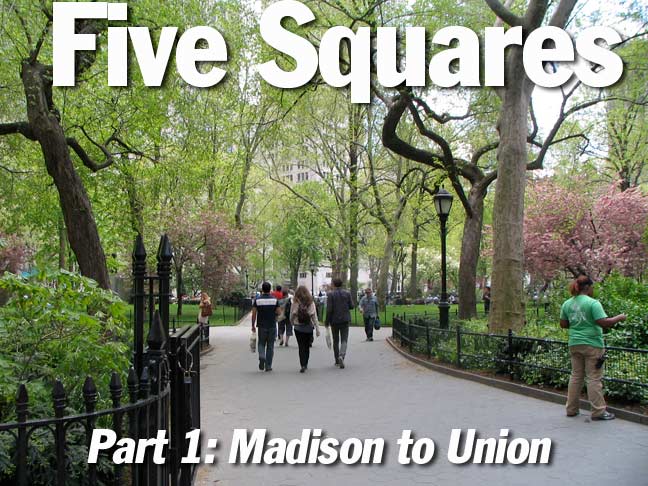
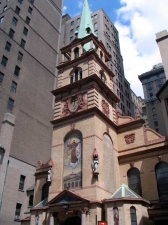
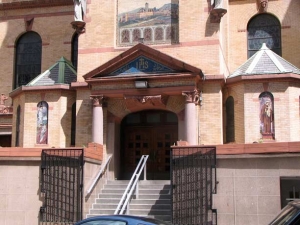




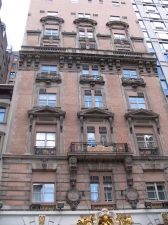
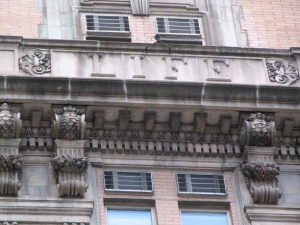

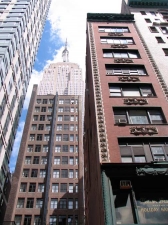
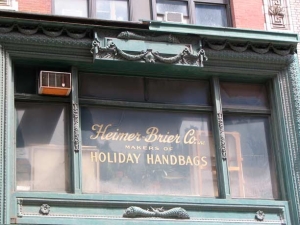
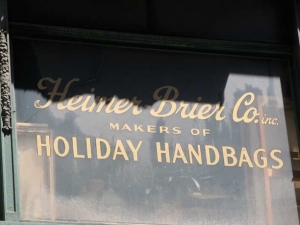

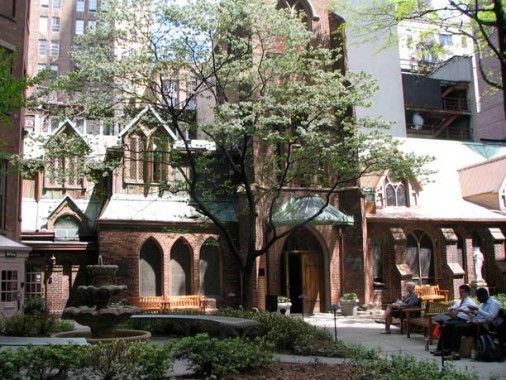


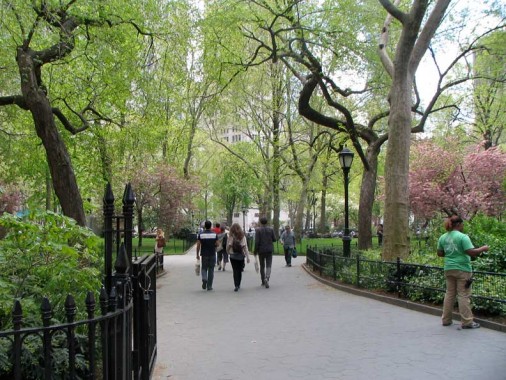
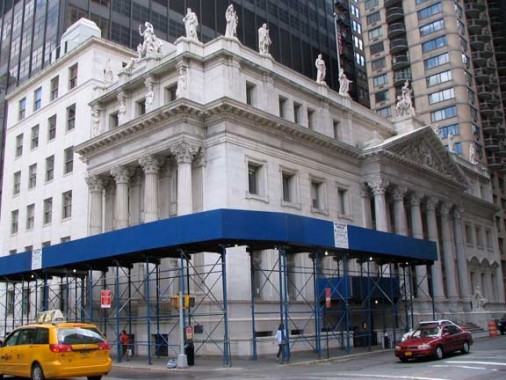
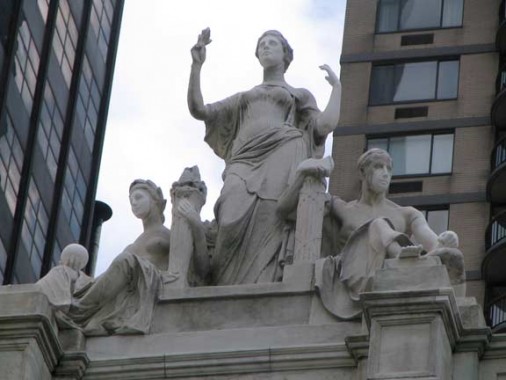


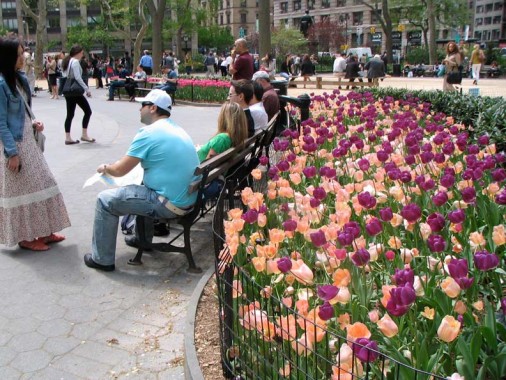
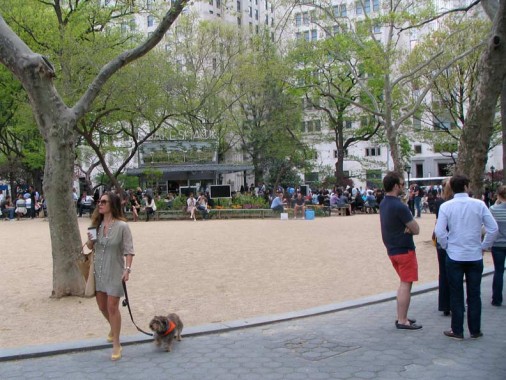








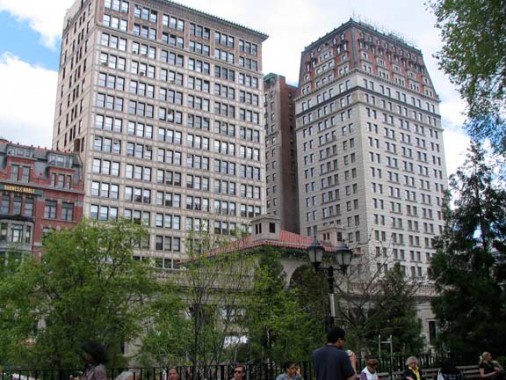

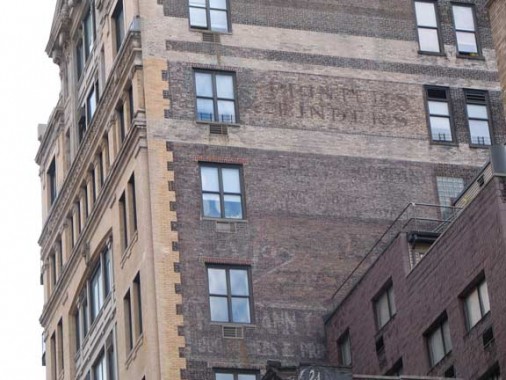
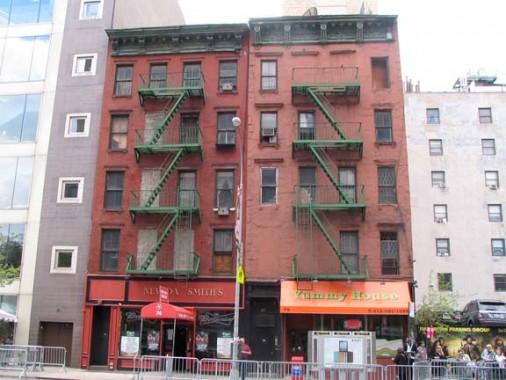
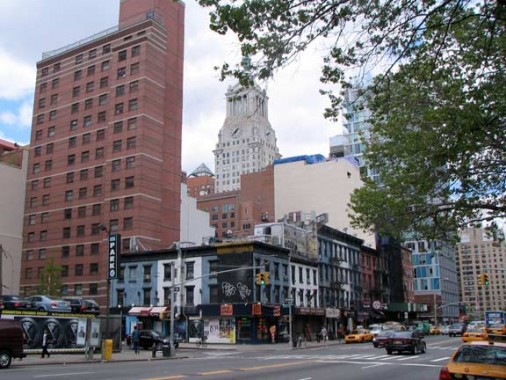
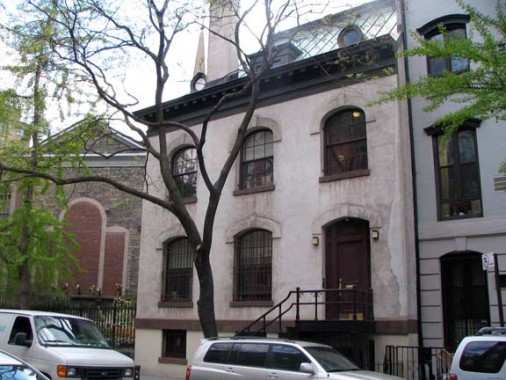




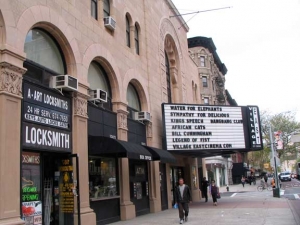




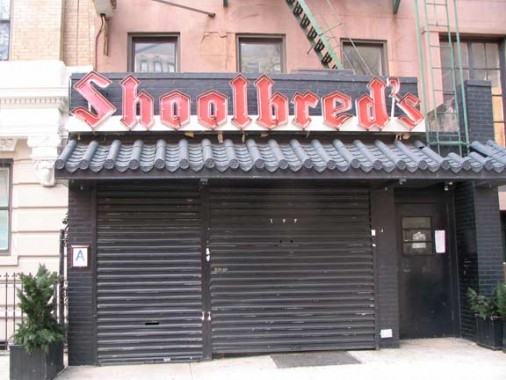



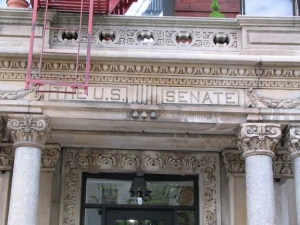
20 comments
Regarding that Buick, the closest parking light I can find is on the ’78’s. My pictures of the ’79 parking lights are not really clear and could be the same.
The Buick Skylark appears to be a 1975 or 1976 model. That’s a fine example of one of GM’s malaise era “badge engineered” products. It’s a Chevrolet Nova with different grill, taillights, and a few other bits to set it apart, but it’s still painfully obvious that it’s a Chevy Nova. The mid 70′s is when GM commenced the long, slow skid that culminated in its bankruptcy crash of 2009. It was cars like that got the processes underway.
However, in GM & Buick’s defense, the Division had the foresight to resurrect the V-6 (originally 1962-67) in the 1975-79 Skylark. After that period the V-6 went viral within the GM divisions. After many re-engineerings the Buick V-6 finally expired around 2007 when GM introduced a 3.7 liter aluminum block DOHC V-6 as a sucessor to the 3.8 liter push rod motor after a great run as America’s favorite V-6.
One more thing, research reveals that the Buick V-6 made it’s final appewarance in 2009 as the standard engingine for the entry level Lucerne. So, that’s 1962 – 2009, which most likely qualifies it as the world’s most popular V-6 ever. Now if only GM knew how to squeeze a profit from it.
If you’re curious about the year of the car, just look at the registration sticker on the driver’s side windshield.
1978 BUICK SKYLARK
I said 76, but I agree, it is a 1978 model.
Note to Kevin: When taking pictures of cars, please try and get a shot of the front end or taillights. Cars can change very little from year to year with the front end or tail end details being the only hint as to the year of manufacture.
The skylark was NOT the buick version of the Nova..The Chevy Nova’s letters made up the other cars in the GM stable that were just like it….N for Chevy NOVA, O for OLDSMOBILE OMEGA, V for PONTIAC VENTURA and A for BUICK APOLLO for which i had a ’76 Model of the car ;-}
After 1975 the Apollo was renamed Skylark. It’s the same car, a Chevy Nova. See here: http://en.wikipedia.org/wiki/GM_X_platform
When I first saw that statue of Andy Wahrol there last month, I wasn’t sure if that was a real statue of just somebody looking like one. In order to find out, I gave it a little tap and heard a clang sound realizing that it was a statue all along. Of course there are street performers who tend to look like statues. Speaking of Warhol, I don’t know why his former factory where he did much of his in Murray Hill couldn’t just be preserved, but rather sold to another buyer for their living. Meanwhile, I found the pedestrian plaza to be sort of meaingless there considering that Union Square is there.
Kevin, it’s hip to be square or as Dave Frishberg puts it ‘When it was hip to be hep I was hep.” A little Lord Buckley is good for the soul.
I’m so square I’m hip coming out the other side. You’re cool when you do what you do.
I once saw warhola right near there walking with some dude.The dude kept grinning at me like a smartass hyena.Should have slammed into him as i walked by.He probably wouldnt have done a damn thing about it
“And there aint a damn thing you can do about it!” Proverbs,1-24
A few comments on the Madison Square area:
Just north of the park, on 25th St., was the Gilbert Hall of Science, a wonderland for me as a child. On display there were the most complex constructions anyone could make of metal beams and corner braces with the Erector Set (no double meaning, dammit!) and a fabulous American Flyer electric train layout, that was Lionel’s major competitor.
Gilbert also made the most wonderful chemistry sets, I had one. It was chock full of toxins we all knew to keep out of our mouths, and ingredients that could be combined to make explosives and rocket propellents (powdered zinc and sulphur!) and smelly gases (hydrogen sulfide!)–all stuff we’d never let a 12-year-old have in today’s overprotective environment. They made microscope kits you could use to see tiny living things, though I had a real Bausch and Lomb brass instrument that was vastly better.
At the Gilbert Hall of Science I first saw a demonstration of how polarized light with a rotating filter could be used to make the most lovely ever-shifting patterns of colors. Back in the 60s in the East Village, I was a psychedelic lightshow artist with a storefront called The Grass Gallery. Here I displayed a projector based on exactly that principle I remembered from Gilbert.
In the 70s I bought white greasepaint at Gordon Novelty to make myself up as a clown and sell balloons in the street. I did it in pantomime with a top hat and a Harpo horn at a buck a pop, and could make a hundred bucks in an hour!
One day on 5th Ave just below 23rd St, I physically ran into Andy Warhol and almost knocked him over. Had to grab him to keep him from falling and he weighed nothing, the guy felt like a bundle of sticks! That was back when I was associated with the nearby Brill and Waldstein studio, publishers of The Monster Times and Inside Comics. You may remember our Godzilla for President campaigns.
Do we also remember the two conjoined buildings on 5th alongside the park that hosted showrooms for every toy manufacturer in the country, back when we still made stuff here? I think the signage said “The Toy Building.” I went there in 1967 to try to sell the prismatic psychedelic glasses I invented but got no takers. I may not be rich but I have my memories, and I love new York!
Great stuff!
I am surprised you did not mention the Western Union building on 23rd and 5th ave.
On the north side has a nice relief on it and a few other nice designs.
I work in the area and if all goes well, I will be surveying those blocks in the Flatiron area.
I really enjoyed the article – and thanks for linking the terrific St. Francis of Assisi web site. I do, however, have to question one assertion made on that site – specifically that Manhattan’s Tenderloin District only came into existence at the turn of the last century. In fact, numerous refenences to it are made during much of the 19th century. You can easily find this out by reading “Gotham”, the prize winning history of pre-1898 NYC. In particular, the blocks around midtown 6th Ave. were well known as a particularly dicey area during this time. While things might have further deteriorated in the early 1900’s, it didn’t start then.
“FIVE SQUARES Part 1: Madison to Union | | Forgotten
New YorkForgotten New York” was indeed a quite excellent blog post, .
Continue composing and I’m going to keep browsing! Thanks for the post -Patti
It’s a pity you don’t have a donate button! I’d certainly donate to this brilliant blog!
I suppose for now i’ll settle for bookmarking and adding your RSS
feed to my Google account. I look forward to new updates and will talk about this blog
with my Facebook group. Talk soon!